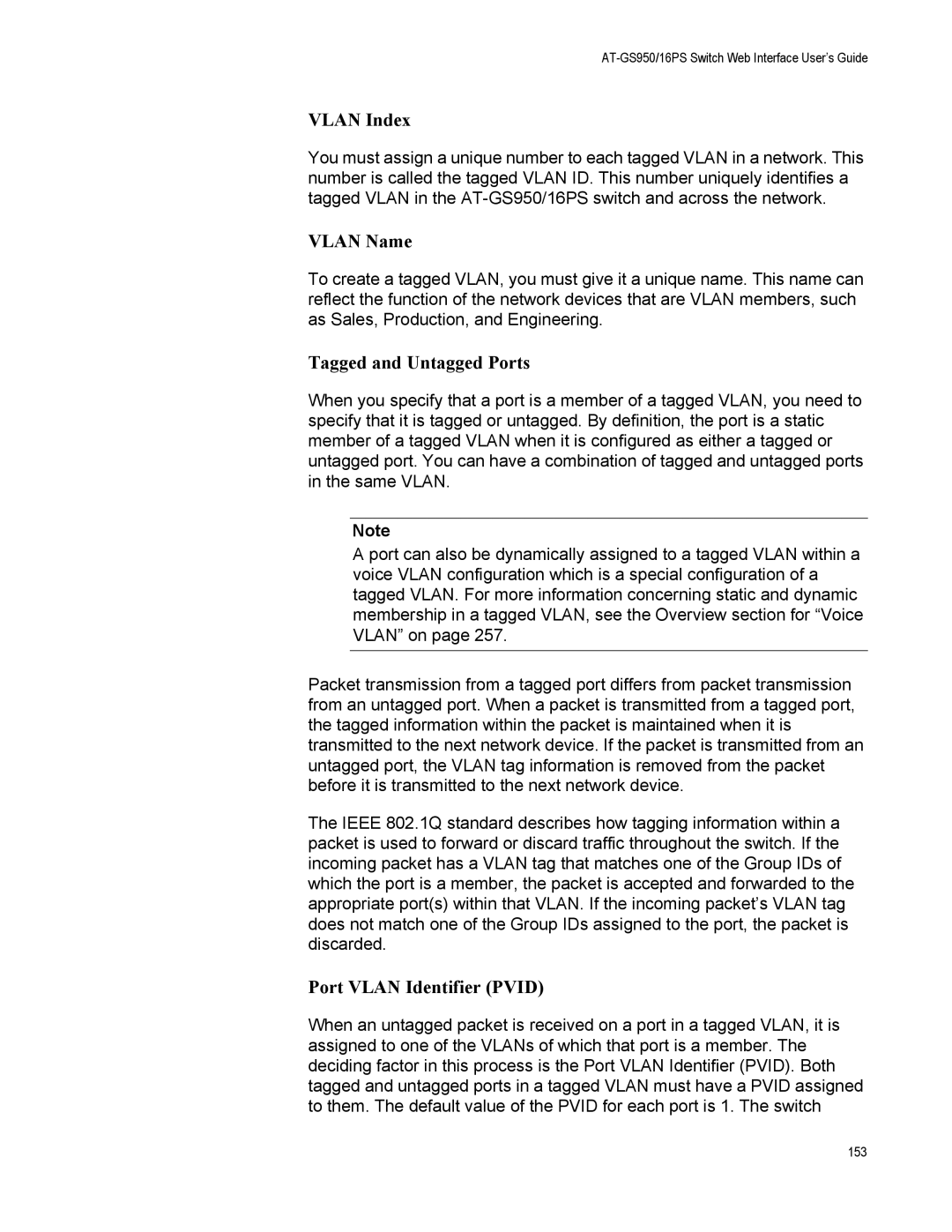
AT-GS950/16PS Switch Web Interface User’s Guide
VLAN Index
You must assign a unique number to each tagged VLAN in a network. This number is called the tagged VLAN ID. This number uniquely identifies a tagged VLAN in the
VLAN Name
To create a tagged VLAN, you must give it a unique name. This name can reflect the function of the network devices that are VLAN members, such as Sales, Production, and Engineering.
Tagged and Untagged Ports
When you specify that a port is a member of a tagged VLAN, you need to specify that it is tagged or untagged. By definition, the port is a static member of a tagged VLAN when it is configured as either a tagged or untagged port. You can have a combination of tagged and untagged ports in the same VLAN.
Note
A port can also be dynamically assigned to a tagged VLAN within a voice VLAN configuration which is a special configuration of a tagged VLAN. For more information concerning static and dynamic membership in a tagged VLAN, see the Overview section for “Voice VLAN” on page 257.
Packet transmission from a tagged port differs from packet transmission from an untagged port. When a packet is transmitted from a tagged port, the tagged information within the packet is maintained when it is transmitted to the next network device. If the packet is transmitted from an untagged port, the VLAN tag information is removed from the packet before it is transmitted to the next network device.
The IEEE 802.1Q standard describes how tagging information within a packet is used to forward or discard traffic throughout the switch. If the incoming packet has a VLAN tag that matches one of the Group IDs of which the port is a member, the packet is accepted and forwarded to the appropriate port(s) within that VLAN. If the incoming packet’s VLAN tag does not match one of the Group IDs assigned to the port, the packet is discarded.
Port VLAN Identifier (PVID)
When an untagged packet is received on a port in a tagged VLAN, it is assigned to one of the VLANs of which that port is a member. The deciding factor in this process is the Port VLAN Identifier (PVID). Both tagged and untagged ports in a tagged VLAN must have a PVID assigned to them. The default value of the PVID for each port is 1. The switch
153
